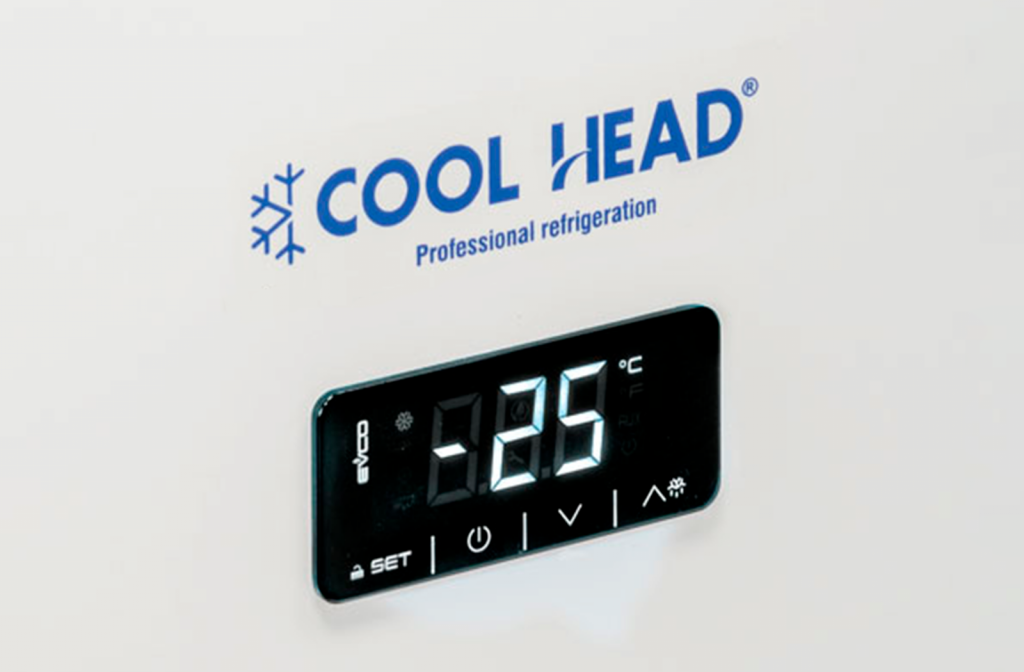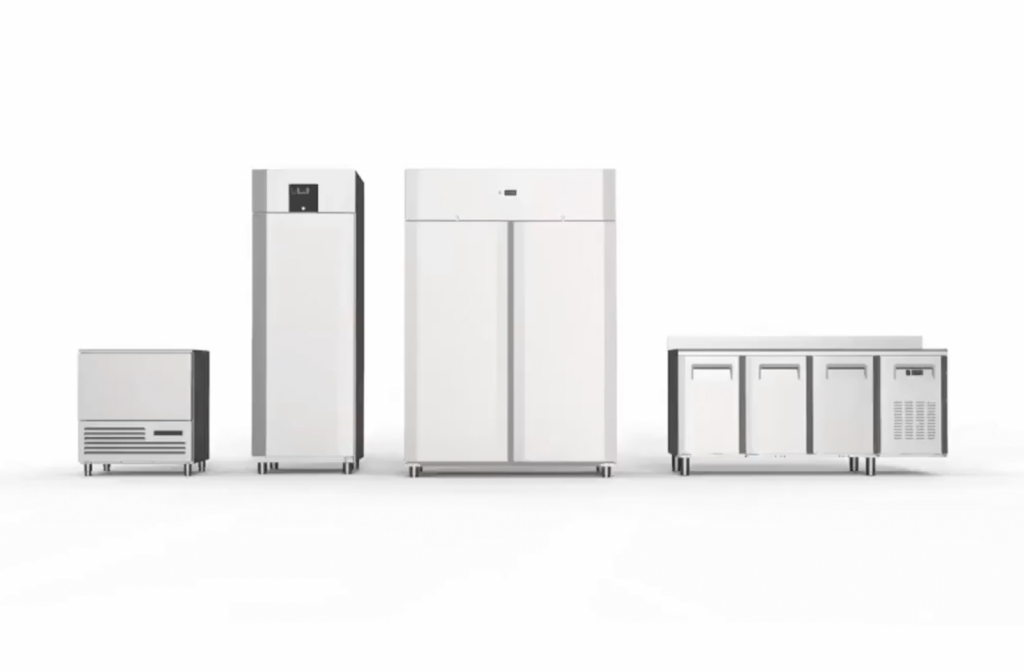Digital thermostats are key to reducing consumption and ensure energy efficiency in restaurants, bars, retail shops, ice-cream parlors or bakeries.
Digital thermostats control the temperature of professional coolers and freezers, making sure the equipment is refrigerating or freezing at the right temperature. Cool Head Europe’s thermostats also include two alarms to warn when the temperature is too high or if the doors are left open: the open door and the high temperature alarms.
If you want to keep your ingredients at the proper temperature, and to cut costs in your energy bill, you need to make sure your equipment includes this cutting-edge technology.
Digital thermostats: keeping temperature under control
Digital thermostats allow the user to set the temperature needed to cool or to freeze a wide variety of ingredients and drinks, avoiding food waste and cutting costs.
Choosing the right temperature for each kind of ingredient ensures that it is preserved under optimal conditions for as long as possible. It also means that food waste is less likely to happen as the food is unable to spoil. Setting up the correct temperature is also essential for food safety, as it prevents the growth of harmful bacteria.
Vegetables, fruits, fish, cheese, meat and seafood can be stored safely if you know the best temperature for them. For example, foods classified as “high-risk foods” (meat, poultry, dairy, seafood, eggs, cold cuts and cooked rice and pasta) should be stored in a professional refrigerator (an upright cabinet or counter) and kept below 5 degrees Celsius.
If these high-risk foods are kept under 5 degrees Celsius, this prevents them from entering the “danger-zone”: temperatures between 5 degrees Celsius and 60 degrees Celsius. The danger zone is the zone which provides bacteria with the environment to grow and multiply, causing food poisoning.
In order to avoid these problems, Cool Head and Cool Wise equipment has been designed with a “high temperature alarm” to alert staff when a fridge or a freezer is not working at a proper temperature.

Thermostats can help prevent risks in food preservation
There is another risk related to food preservation in restaurants and bars: the countless times that refrigerator and freezer doors are opened and closed. Kitchen staff and sommeliers often need to open the fridges to grab food or drinks, but this affects the temperature inside the unit.
Every time they open the door, cold air escapes and more energy is needed to lower the temperature again. When this happens very often, the cabinets and counters need to run at a high-performance level. Sometimes, the doors are left ajar, because of the frantic pace in these businesses.
This may have a serious effect on the food, which could be damaged even without the staff noticing it. That could be dangerous for the health of diners and clients, and consequently for the future of the business.
For this reason, some professional fridges and freezers include alarms that alert the users when the doors are left opened, avoiding all sorts of problems. This applies to the Cool Head and Cool Wise units, which include an “open door alarm” to alert the team when a unit has been left open. This also helps them focus on what’s important for the business: the preparation of the food and customer service.
How can a business be more energy efficient by better settings on the thermostats in its refrigerators?
Digital thermostats play a major role in controlling the energy efficiency of refrigeration units (cabinets, counters and freezers). Keeping food fresh while conserving energy is very important in any horeca business.
So what can we do to help our fridges and freezers to be more efficient?
- Store foods in the proper place: use the cold spots near the cold-air inlet for meat and poultry, but keep produce and condiments in the colder areas of the fridge.
- If possible, allow food to cool down naturally before putting it into the fridge or freezer.
- Remember to adjust the temperature settings when the season changes, as what works well in the winter months may need to be adjusted in summer time.
- Defrost the unit when necessary: otherwise it will need more energy to function.
- Allow ventilation: refrigerators need room inside for air to circulate.
Strategies for keeping food safe
As we have seen, the digital thermostat will tell you quickly if a professional refrigerator or fridge is working properly, helping you to keep food safe.
These are some of the things we can do during our daily routine to take better care of our refrigeration equipment (cabinets, counters and freezers), decrease energy consumption and improve their efficiency.
– Avoid “overpacking”: in refrigerators, cold air must circulate to maintain the proper temperature.
– Clean up spills immediately: getting rid of spills — especially drips from thawing meats — will help prevent “cross-contamination,” where bacteria from one food spread to another.
– Keep ingredients covered: store refrigerated foods in containers or storage bags.
– Clean the cabinet or the counter very often – this will avoid an accumulation of bacteria or dust, which can affect its performance and the quality of the food stored.
Follow these energy saving tips for refrigerators and you will notice the difference.
Energy efficiency reduces energy consumption
Finally, the electricity bill is one of the biggest expenses for restaurants and businesses. This means it is important to keep it under control and to reduce energy consumption as much as possible. That’s why a digital thermostat can help, by making sure your equipment is working properly and not consuming more energy than necessary.
This also affects the way we store the food, allowing the business to keep their quality for the longest time possible, cutting costs by reducing food waste.
That’s why it is so important to pay attention to the sustainable features of professional fridges and freezers when purchasing them. There is a wide range of upright cabinets and freezers (chest freezers, undercounter freezers, display freezers, walk-in freezers, etc.) to suit different types of businesses, such as restaurants, retail shops, supermarkets, etc. But make sure you understand how efficient they are before choosing them!


